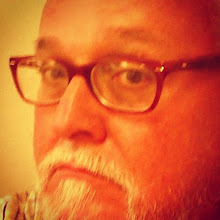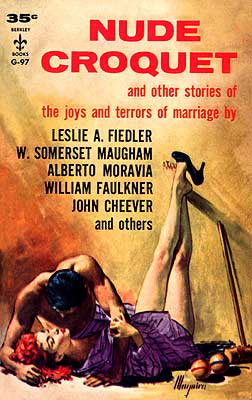
Once again, my gratitude goes out to the Chittenden family for the trove of information and images that they've provided for us here at
Who Is George Mills? This week, we'll take a look at an very interesting document entitled "Evacuation," written recently by
Ann, a daughter of
Hugh and
Barbara Chittenden of
Newlands School in Seaford, Sussex. It's a delightful and personal recollection of a five year long event that had the potential to be a nightmare, and one hopes that most of the children who had been evacuated at the onset of the Second World War were able to, like Ann, keep many of the joys of childhood intact—at least to some degree.
Thenford
At the beginning of the war, Newlands School was evacuated for a period of five years, firstly to Thenford House situated in a small hamlet approximately five miles from Banbury in Oxfordshire. It was a lovely Georgian mansion although I remember it being extremely cold in winter, the only heating being provided by open fires. I think Thenford House had approximately 80 acres of land. I started off as the only girl in a school comprising of about 60 boys. Two other girls joined the school later on during the evacuation although for a shorter period.
We had a very carefree childhood. The worry of keeping the school going and the safety of the children must have been an absolute nightmare for my parents, but we were unaware of this at the time and I recall a very happy childhood with a lot of freedom.
Below is a list of some of my extremely random childhood memories of my time at Thenford!
Our classrooms were over the stables.
The owner of Thenford House had left his horses behind and the groom who remained there taught me to ride.
 Fire practise involved putting a rope around one's middle and being lowered over the side of the house from the parapet. I doubt modern Health and Safety officials would approve!
Fire practise involved putting a rope around one's middle and being lowered over the side of the house from the parapet. I doubt modern Health and Safety officials would approve!
There was a large lake on which we skated – highly dangerous! I also learnt to chop firewood with an axe at the age of 8, as did the boys at the school. Again, highly dangerous!
There was a rogue gardener who had locked the kitchen garden and was selling the fruit and vegetables, which were supposed to be for the use of the school. I recall my father, with the school doctor, climbing over the walls in the middle of the night to raid the garden for his own vegetables!
The farm was just beyond the stable yard and, after milking, I used to drive the cattle back to the fields for the farmer at the age of 8.
One night at Thenford we were all taken down to the cellars as Coventry was being bombed. I recall there was a red glow in the sky, although Coventry was a long way away.
I remember going for a walk through the woods with our gas masks on for practise. They used to steam up and I used to lift the sides up to let the air in which would have defeated the object.
My father joined the Home Guard at Thenford [above, left], which was a little bit like Dad's Army!
Wardington
After three years we moved to Wardington House in the village of Wardington near Banbury. My memories of my time at Wardington include:
 There was a farm next door to the house with a herd of jersey cows and my mother used to make bowls of clotted cream for us. Delicious!
There was a farm next door to the house with a herd of jersey cows and my mother used to make bowls of clotted cream for us. Delicious!
There were Italian prisoners of war working on the farm. I recall that they used to wait every evening by the front of Wardington House to be picked up and returned to their camp.
I used to ride the butcher's pony for sixpence an hour.
My mother used to provide food for midnight feasts for the school, unbeknown to anyone else!
I remember the Home Guard at Wardington also. The overriding memory is of the Home Guard marching up the village street, with their Commanding Officer shouting “Halt” and they completely ignored him and kept on marching. He kept on shouting “Halt” until he finally gave up and yelled “Oh, for gawd's sake halt!”
Seaford
During the evacuation the school buildings in Seaford were taken over by the French Canadians. They used the weather vane for target practise and shot off the North, South, East and West which were later found after the war in the flower beds in the garden.
All very light hearted memories, of no importance but I hope they are of some interest to you!
Wonderful! I do believe these memories are important, though. The numbers—how many children were relocated, what transportation, average distance travelled, destinations, costs, etc. —are, I'm sure, readily available on-line and in dusty books. The facts and the figures, however, don't really tell the human part of the story.

These recollections help me—and all of us—envision a time and a way of life that's disappearing all too quickly, no matter on which side of the Atlantic one resides. Memories of things like the fire drills, the rogue gardener, the clotted cream, and the Italian prisoners help re-create it all in a way that makes television programmes like
Foyle's War so popular—at least here in the States.
Perhaps the most enduring pop-cultural reference to Britain's evacuation of children during World War II comes in the first chapter of
C.S. Lewis's The Lion, the Witch and the Wardrobe,
as described in Wikipedia :
"The story begins in 1940 during World War II, when four siblings—Peter, Susan, Edmund, and Lucy Pevensie—are evacuated from London to escape the Blitz. They are sent to live with Professor Digory Kirke, who lives in a country house in the English countryside."
In Lewis's novel there is no reference to where, exactly, the children had been relocated, but it's easy to imagine that, had those Sons of Adam and the Daughters of Eve not become involved in their adventures beyond the wardrobe, they may have instead explored the area around Professor Kirke's country house and had much less fantastic, but quite meaningful, adventures like Ann's above.
How does any of this truly relate to George Mills? First, George lived in this world, and it was far less idyllic than as was perceived by young Ann. Mills returned to the military in 1940, becoming a second lieutenant army paymaster at the age of 40, assuring us that he was keenly aware of his duty during the conflict as well as the dangers for himself and his nation. Understanding the world in which Mills lived provides context for understand the man himself.
Secondly—and as always seems to happen when we study George Mills—we find there is a Sussex connection.
During George's time as a schoolmaster at Warren Hill School in Meads late in the decade of the 1920s, he must have been acquainted with writers (and sisters-in-law)
Kitty Barne and
Noel Streatfeild. Mills was not a writer at the time, and would not become a published author until the appearance of his breakthrough novel
Meredith and Co.: The Story of a Modern Preparatory School on bookshelves in 1933. George had
taught with Kitty's husband, and
Noel's brother, musician Eric Streatfeild in Eastbourne.
 Meredith and Co.
Meredith and Co. contained vignettes undoubtedly culled for his time at Warren Hill, as well as his stint at Windlesham House, then in Portslade, and made a study of the vernacular used by boys of the era, a first in children's literature. It was a device that many subsequent children's authors have imitated.
Later that decade, as children were being evacuated from Sussex and in the same year that Mills was returning to active duty under the Colours, Kitty Barne published her Carnegie Medal winning book
Visitors from London, an early novel about evacuees that was set in Sussex.

By 1945, Noel Streatfeild had authored
Saplings, a novel intended for adult readers, set in 1939 and describing the wartime experiences of the Wiltshire family, focusing on the children Laurel, Tony, Kim and Tuesday. Saplings,
according to a reviewer called Nymeth ,
"chronicles the psychological effect these separations, this uncertainly and instability, had on those who had to grow up with them," and
"capture[s] a child’s perspective and understanding of the world" as it was for them during the war.
The on-line review continues:
"The children are actually very well-off, in the sense that they are physically safe, they never go hungry, and they don't suffer discomforts. And yet my heart still broke for them."That is very much how one might feel regarding Ann's memories above. It's a tribute to Ann, and the rest of the world's '
greatest generation,' that they survived so much and were able, for the most part, to come away with memories of a positive nature. Families were separated, lives disrupted, and a gnawing feeling of fear must have been prevalent, knowing Nazis were just miles away in occupied France, anticipating overrunning and conquering England in much the same way they'd
blitzkrieged most of Europe. It's difficult today to think of those times as having been anything but frightening, a feeling of which we find a hint in Ann's recollection of the bombing of Coventry.
Ann Chittenden, as a child, seems to have lived very much in the moment, and if she harbours any grim or bitter recollections of leaving home and family for five years of her life, she isn't dwelling on them.

Noel Streatfeild, however, was still ruminating over the events of the evacuation some thirty years later when, in 1974, she published
When the Sirens Wailed, a text
described as being "about three evacuees and cover[ing] issues like rations for evacuees, relationship[s] between evacuees and townspeople, and the problems encountered by those who stayed behind." [You can find more about the book by clicking
HERE.]
Many thanks, Ann, for adding your own memories here.
George Mills had passed away in 1972, and there's no indication that he ever discussed his feelings and experiences during the war with anyone who still living today. During the conflict, George dealt with the deaths of friends (
Terence Hadow,
Egerton Clarke), colleagues (
Capt. William Mocatta,
Joshua Goodland), and loved ones (his wife,
Vera, and his mother,
Edith), all between 1939 and 1945.
We certainly don't know if he kept in touch with Barne or Streatfeild after leaving behind a career as a schoolmaster and becoming, like them, an author of children's books. What we do know is that whenever we examine George's life, or the lives of those close to him, the path always seems to lead us to Sussex.
Did George spend time after the war teaching in Sussex—Seaford, specifically—at Newlands School? Right now we have no evidence of that.
But it wouldn't surprise me one bit!

 And all that was within the first 20 days of writing this blog!
And all that was within the first 20 days of writing this blog!
























![Meredith and Co. [1933] by George Mills](https://blogger.googleusercontent.com/img/b/R29vZ2xl/AVvXsEjlUeRNPnH8Xd8JT59QdtabQHRI6DI6Hqew57i6qixjOL3LjgUD9g22o3-wNlmBya36D5-6KZXX-sxLnktAfEqjlvTmdwyiIL2K6VHOGW2Wq9Pe8_oFGknENfVE1Xrkdj0b8FYXTz_6SMg/s1600-r/sm_meredith_1933.JPG)
![King Willow [1938] by George Mills](https://blogger.googleusercontent.com/img/b/R29vZ2xl/AVvXsEgiz_iaQjinIbVw6yQ-W4hwx6wGJwMQH9azCs3Qacp9eX627B7Eq9hMn1wlHLzlkbcflHRWM8VcPX-1uteKbs4LA5q5Oq69WhrnhzBQLjpseK_M34PSoOOhTZ96EfVAGFehG53gZ0M4EvU/s1600-r/sm_1938.JPG)
![Minor and Major [1939] by George Mills](https://blogger.googleusercontent.com/img/b/R29vZ2xl/AVvXsEgH5nj4Q6BNpzVEb1vyJeGV6ikuN4SFAyDa-jypIgbvdrxqcjHkNxqjrXH7ptZmge7oTTpn5QjAI0yCJPdI-fIzooCDD1TAA3RDxO9jzLcU3QOIhBWKiKNz6CPjCSTZgIPd9_4zM7LLpAw/s1600-r/sm_1939.JPG)
![Meredith and Co. [1950] by George Mills](https://blogger.googleusercontent.com/img/b/R29vZ2xl/AVvXsEgm_JPAXPpX0wb8bDkjYG67Sg1HePiPhRP6b9oUMWvkJhiW6XJzmxTQ7TBepfxpPgRrFNCRuumYRj-SAfU9Kw-uDsbO5HBtyxfQfClHVMJxJUkDpbkrCPhzpC4H_g_ctlirgnSla4vX1EQ/s1600-r/sm_1950.JPG)
![Meredith and Co. [1957?] by George Mills](https://blogger.googleusercontent.com/img/b/R29vZ2xl/AVvXsEg0zRm3-CCmA8r2RrBmrACDvmxJjoBjfxUoPI9yc6NWu1BZ3dd89ZvCixmmKZe1ma0QiDIrsDZNqf-8h1egh0JLiRYHagXAqQ1UknWPy6SksK76psYPcEMLGa_Aj7wo2vMFPo0aMdcx_pg/s1600-r/sm_meredith.JPG)












